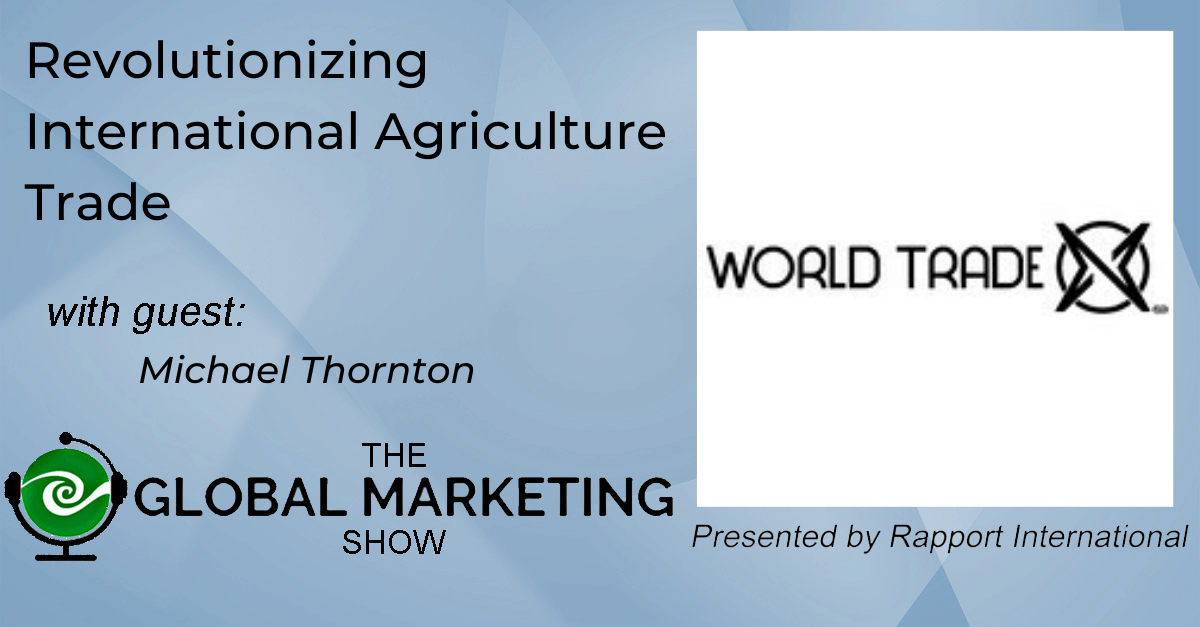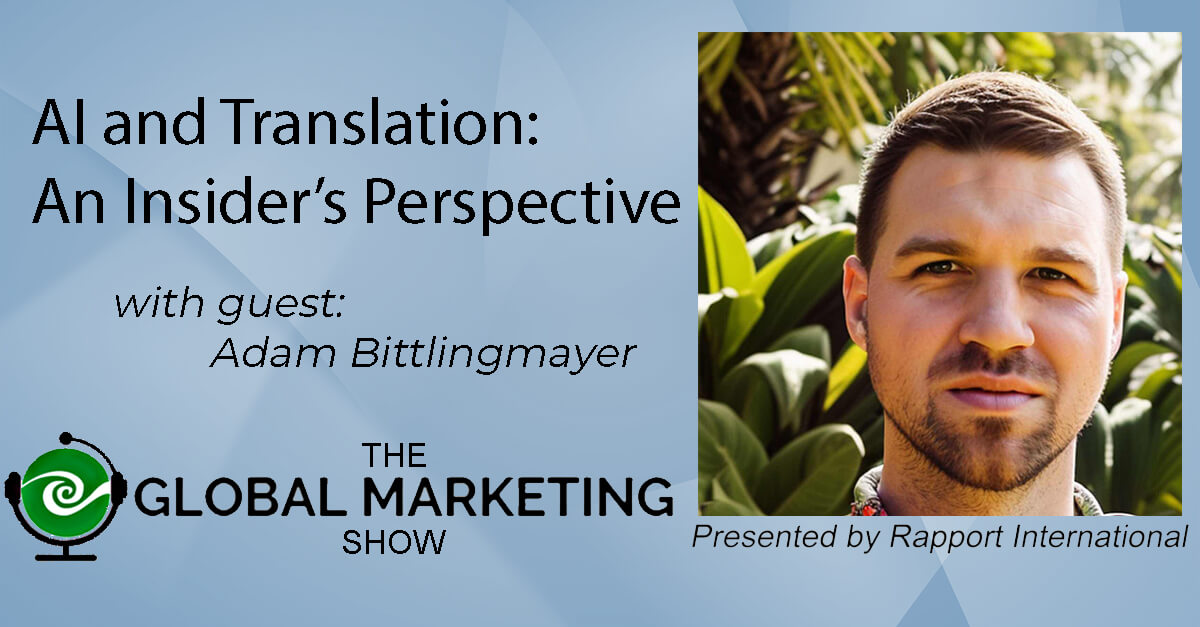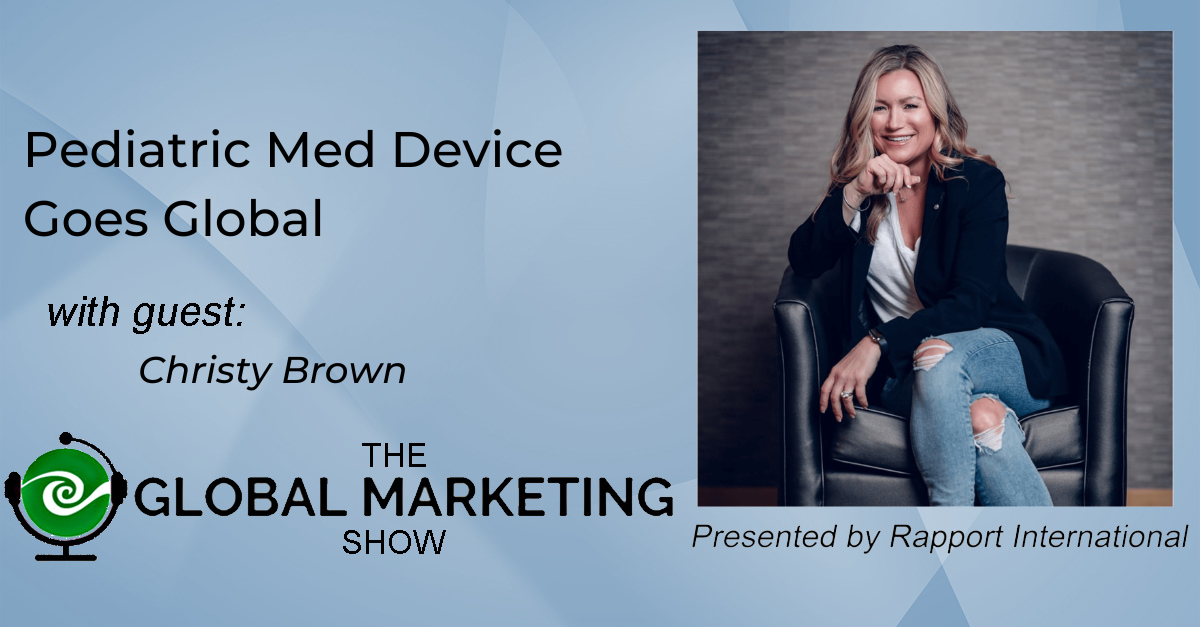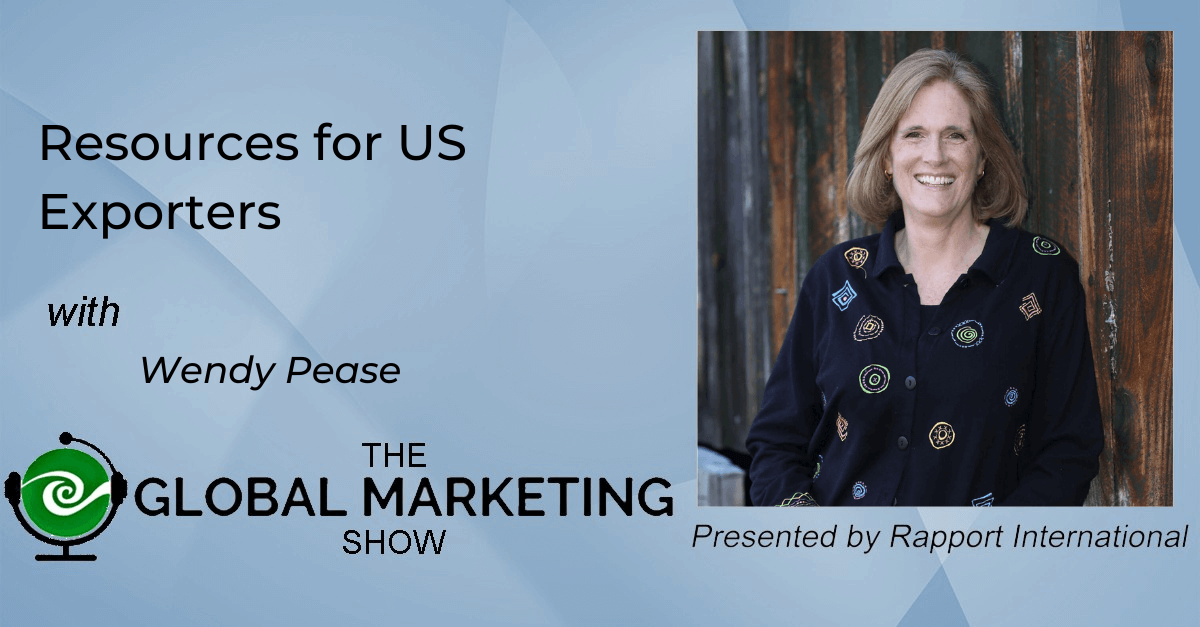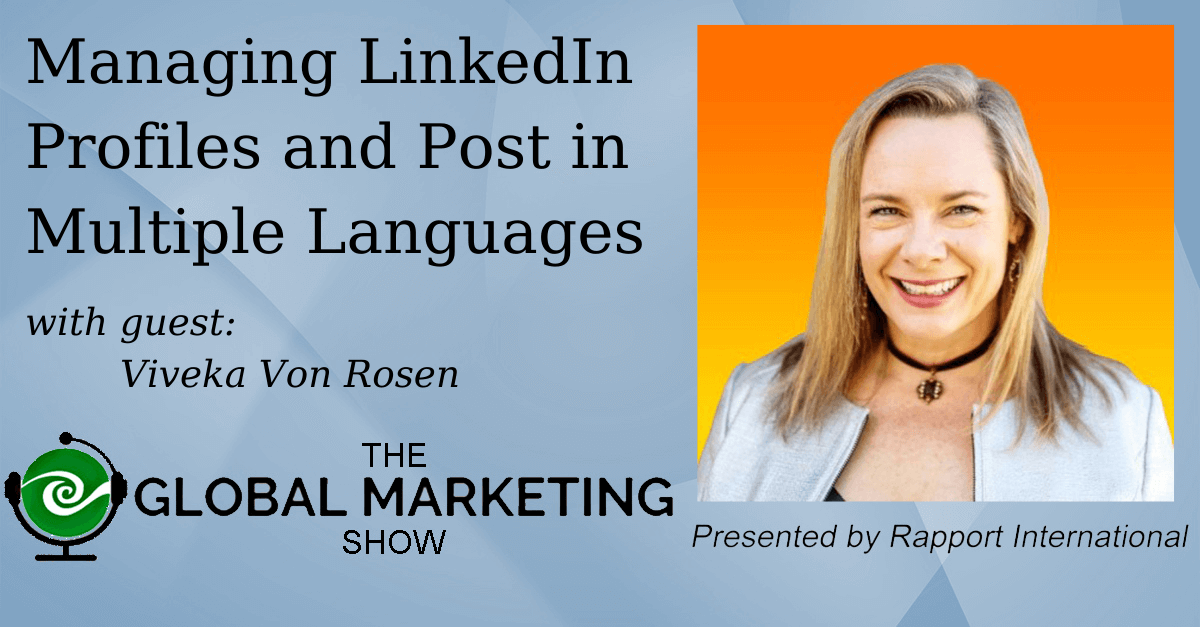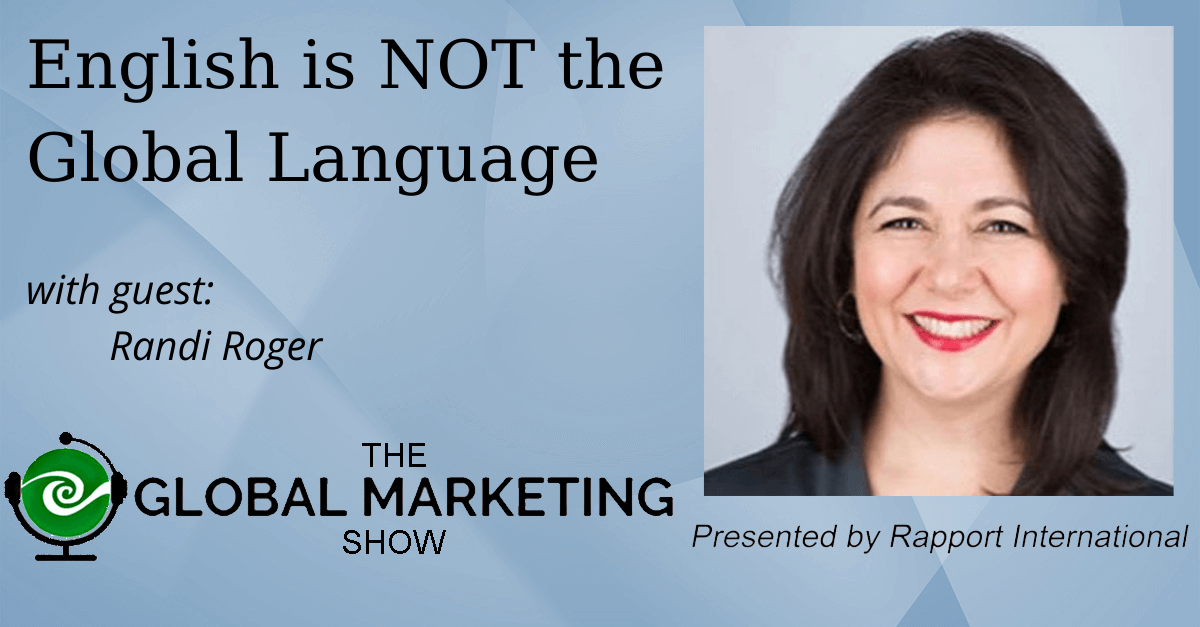Jon Kirkegaard, Owner of DCRA Inc. has over 40 years in global supply chain management, consulting, and servicing. Through his experience, he breaks down the issues in supply chain – starting with how the term is used and ending with how it can be fixed.
He explains that the real problem is sales/operations planning and when companies implement plans that are slightly better than the competitors, they have a competitive advantage.
He likes to give a quiz – what’s the best model for supply chain:
- Selling for $10 with costs of $5 and holding inventory to immediately fill customer demand.
- Selling for $8 with costs of $6 and holding components to build to demand which allows for flexibility as demand changes with deliver times of 3-6 weeks.
- Selling for $7 with costs of $5 with no inventory holding costs so the consumer saves money but must wait 3-6 months for delivery.
There are advantages to each option – and many companies take higher risks to fulfill customers’ orders right away. And, as Jon says, “no one gets fired for having inventory, they get fired for not having inventory.”
But that $5 margin sinks quickly with warehousing costs or having to dispose of goods no longer needed.
Other companies minimized their risks to fill on demand, yet outsourced their full operations to the international manufactures and lost control of sales/operations planning and ran into trouble with the current shipping issues.
He does have an answer that you can listen to on the full podcast episode.
Links:
Websites:
https://soptime.wordpress.com/2020/06/07/the-silver-lining-of-covid-19-a-call-for-u-s-manufacturing/
https://soptime.wordpress.com/2013/12/10/think-of-sop-as-your-supply-chain-golf-swing-golf-coach/
https://soptime.wordpress.com/2021/12/07/webinar-sop-diagnostic-launch-focus-with-throughput-ai/
LinkedIn: https://www.linkedin.com/in/jonkirkegaard/
Connect with Wendy: https://www.linkedin.com/in/wendypease/
Music: Fiddle-De-Dee by Shane Ivers - https://www.silvermansound.com
ATTENTION: Below is a machine generated transcription of the podcast. Yes, at Rapport International, we talk a lot about how machine translation is not good quality. Here you see an example of what a machine can do in your own your language. This transcription is provided as a gist and to give time indicators to find a topic of interest.
[00:00:34] Wendy: Hi listeners, welcome back to the global marketing show. I am so glad you're here, and if you haven't joined the Facebook group, you're gonna wanna do so today to have some interaction with today's guest. The Facebook group is called, "Global Marketing and Growth." So, go sign up for that now and engage in the conversation. We're gonna have a quiz in there and I'm gonna wanna see what your answers are, cuz it's, it's very interesting.
[00:01:03] So as you may or may not know, this podcast is sponsored by Rapport International who provides high quality language services, both written translations, spoken interpretation, and they're known for their tidbits. We're recording this right before the, American Independence or 4th of July holiday, I've got some little statistics about that. Did you know that 178 countries around the world celebrate Independence Day each year? So there's 195 countries in the world, so most of them celebrate, independence and 26 of the countries celebrate in the month of July. So happy Independence Day to everybody celebrating this month in July and the rest of the year.
[00:01:53] So today, I'm gonna move on to our guest, it's gonna be a fascinating conversation cause' it's very topical. It's about supply chain management and all the issues that are going on now, we're gonna try to break it down to get some clarity on this. So Jon Kirkegaard is a 40 year veteran in solving global supply chain issues. He's been a strategy operations consultant, he's worked for leading major supply chain planning companies. And currently he's the owner of DCR Inc, where they've got patented technology and they offer services and consulting to help solve all these supply chain issues that we have. So, John welcome. I'm glad to have you here.
[00:02:42] Jon: Thank you.
[00:02:43] Wendy: So I wanted to start out with the quiz and, and we talked about this before, coming on that there's a couple of terms that you thought would be good to define before we go into the quiz. So actually I think there were three of 'em. So do you wanna go ahead and tell us the terms and what the definitions of those are?
[00:03:00] Jon: Sure, Wendy, I, I think the, uh, hopefully the takeaway from folks who get a chance to listen to this discuss. Is to greatly simplify what is the purpose of managing your supply chain or better defined by sales and operations planning? So cause there's lots of confusion and, and most of what you see in the media are squashing down bugs of, of symptoms to, to the problem we need, not the, really the root cause.
[00:03:32] The root need of a business is to, is to generate profits income, cash flow, and simply defined by return on assets. Right. Kinda see the whiteboard behind me. It's kinda blurry, but return assets, revenue minus your costs divided by the asset base gives you it's something wall street investors look for.
[00:03:53] It's just a very simple metric to find business value. The second term is, is I try not even use the term supply chain anymore. It's got diluted by people who wanna sell a bookshelf and call supply chain book bookshelf. It's gonna solve a problem. I tend to, we focus on sales and operations planning, which is a process, the people process of technology to balance your, your lead time of demand with your lead time of supply.
[00:04:19] And, and that would. A term that I would encourage any business owner or anybody in business to really sit down and think about especially as you evolve from a small business to a larger business, or even for a gigantic business, is, is what you're trying to do in supply chain and designing your supply chain and designing the way you you fulfill is, is balance that lead time supply lead time of demand.
[00:04:44] A third term in, there is a planning bill of materials, which is not your engineering bill of materials. It's a very important term, which is the components you generally assembled. Good. So the, the, the question that I've used for, I guess, decades with, with clients and it's amazing how. 10 years ago, it was confusing to 'em and today they get it better, but, but I'd, I'd offer up.
[00:05:09] You've got three different business models and, and they're not mutually exclusive, but pick which one you would like, you're selling, you know, red dresses with, with suitcases or, or you're selling a computer, whatever it may be. And, and you have the opportunity to load up on months, even years of inventory of the dresses.
[00:05:30] You think the ladies are gonna wanna. Or better, a better example might be the computers you, you think they want, they want one. and that, and that you sell that for $10. It costs you $5 in, in direct material costs. And so you have a five profit, but you have all this inventory you're holding. The second, the second and, and that's, and, and, and.
[00:05:53] The lead time of fulfillment is immediate. It's in inventory. Somebody comes in, they can buy to me. The second option is you keep that computer in a component form. You have the case, the power supply, the chip, the keyboard, etcetera, and you only hold maybe three to six weeks of inventory and you sell it for less.
[00:06:13] You sell it for $8. Your costs are a little bit higher because. Your direct material costs are a little bit higher because you have these, these components, your inventory is much lower. You have a $2 profit margin and, and, you know, your return on that assets is probably in the 30% range or whatever it may be.
[00:06:29] And then the third option is, is you have a supplier that can assemble these computers for you. When they're, when they're sold. So the third option is I can take an order for $7, the same computers for seven, but it's, it's gonna be, you're gonna tell the customer it's three to three to six months before they take the delivery, that, that product it roughly costs you four or $5 for that cost.
[00:06:52] A good sold But you don't hold any, any assets you're, you're taking money from the customer before you, you expend money to the. And so you have a $2 cash flow. So there there's a three different models and, and
[00:07:07] Wendy: okay. Let me, yeah. Yeah, yeah. So I got some questions on it before I make my pick . So the first one is you're holding the inventory.
[00:07:16] So you've got huge caring cost, but you're making a $5 profit you're selling at 10. You cost are five. What's the return on asset there?
[00:07:26] Jon: Oh, the return on asset is roughly a hundred. For the, the first one, it depends on it's a hundred percent before we consider the, as the asset base. Right. So I'm not factoring in holding the, the, the assets.
[00:07:40] So it's, it's much less when you factor in the assets, especially if something happens where all of a sudden people don't want those, those items, they become obsolete or stale, like bananas on the, the group, the grocery shelf. They don't, they don't last forever. So you're, you have some.
[00:07:57] Wendy: Okay, so your margin is $5, but you've got carry costs that are taken out of that.
[00:08:04] And the return on asset is hard to calculate because you've got,
[00:08:08] Jon: Well, everything goes perfectly. It's it's, it's very, we have stable world. Everything's perfect. The demand curve is from the bottom left to the upper, right. And no, no change, no black Swan events, no change in the customer behavior. Right.
[00:08:22] You have
[00:08:23] Wendy: it and you've got happy clients cuz they're getting it immediately. So it's a steady state world. Now the component that's you sell at eight and your costs are six. So you've got that $2 margin,
[00:08:37] Jon: right? And you're, you're, you're literally carrying no very little inventory and you're carrying the inventory at a component form.
[00:08:44] So if customers, all of a sudden want purple cases for their computers and larger screen monitor. You have very little risk, right? Your risk of obsolescence has gone very much to, to, to, to almost almost zero. And you're carrying, you're carrying much less in inventory also. You're carrying no finish good inventory.
[00:09:05] You're just carrying component inventory.
[00:09:07] Wendy: Okay. So it's a less risk of
[00:09:09] Jon: costs. Very much. The way Dell got started building computers in the, in the nineties,
[00:09:15] Wendy: right? In three to six weeks for fulfillment of a computer, something reasonable.
[00:09:21] Jon: And you may be able to really not really pay more many of those component suppliers until you use those components, which is much what Dell did in the, in the nineties, had a very high for their business.
[00:09:33] Wendy: Okay. And then the third one is the on demand. You sell it and then you manufacture it, but it's three to six months. So the clients have to wait longer. Your margin is the same as the component.
[00:09:50] Jon: Well, the third option is, is using lead time to your advantage, right? So you're setting the expectation with customer that it won't be immediate, but they're getting a better price for not, not getting immediately.
[00:10:02] And, and your, your margin on, on cash over cash is only two, but you really have zero in investment, right? You have zero risk, zero in investment, and ultimately your return on asset is infinite. You have no. So, if you just do the simple algebra of revenue minus expenses equals your, your profit divided by your assets, you really have no assets.
[00:10:26] So your, your, your return on assets is, is, is, is an infinity sign.
[00:10:34] Wendy: So your risk is a lot less
[00:10:38] Jon: really zero. Your, your risk is maybe the cost to man a phone and, and configure a quote. For said computers.
[00:10:49] Wendy: All right. So you know, I know what your answer to this is, but, you know, in digging deeper and thinking about it, I can see real pluses and minuses for each one.
[00:10:58] So listeners, this is where you go into Facebook. No matter when you're listening to this and you type in and look for the discussion on this is what is your company doing now? And what do you think the smartest way to do it is? So put, go to Facebook. Global marketing and growth, and you look for that and then start engaging with everybody.
[00:11:17] Okay. So, John, what do you think most companies are doing these days?
[00:11:24] Jon: Well, this gets into a bit of archeological discussion of the history of, of enterprise systems and people and processes is, you know, most companies, especially up the pandemic had shifted a lot. With long lead time supply chain, where they they'd made the decision, they were only do the first model.
[00:11:46] You know, they were design this fantastic product that everybody was gonna, and they had to buy in mass and stock six months, year lead time. And and like in a steady state world, nothing goes wrong and it worked out well. Well for right. Do we have a steady state world and, and do really good supply chain operators ever.
[00:12:10] Think that way they don't right. The really good supply chain operators obsolete their own products, right? So they're always obsoleting something and bringing you something in. And so the more, the more you understand that lead time of supply of lead time of demand, and the more you wanna shift to option B and C that I described, right?
[00:12:30] You, you don't wanna be holding the hot potato. Or, you know, be at the, the grade school cake cake walk when the there's three participants, only two chairs left. Right. I mean, and, and that's, and, and unfortunately, you know, not as many companies have designed their supply chain to balance the lead supply of lead company demand.
[00:12:51] And it's a real opportunity.
[00:12:53] Wendy: Yeah. So talk to me about radio shack. I know you had mentioned that they were doing the first model.
[00:13:00] Jon: Well, you, you asked me for a story. I, yeah, we've helped hundreds of clients over the years, design their supply chain to business advantage. Right? The concept there is, is this whole field of managing lead time and demand.
[00:13:17] Elite time is so trivially address.
[00:13:22] You don't have to be perfect. You just need to be a little bit better than the other guy being chased by the bear or shoot the other guy in the foot so you can get away faster. Right?
[00:13:30] Wendy: so you just gotta be a bad bit better. So
[00:13:32] Jon: it was years ago, I think about 15 years ago. We'd finished doing a huge turnaround for division of Siemens, actually applying this concept for DSL modems and telecom equipment.
[00:13:46] It turned a business that was failing into the. Supply chain. So supply chain business solution for semen, worldwide, doing exactly what what's on on the board. And somewhere along a lead, a lead came up to talk to the head of supply chain for radio shack and you know, radio shack sells electronic or used to, right.
[00:14:05] They really, I don't think even exist in any form anymore, but and having just recently done this with a big client and, and seeing the benefit. Of this balance. I, I had this discussion with the head of radio shack and they had old IMS, old inventory management warehouse systems. And, and I, I kind of humbly said, you know, maybe there's an opportunity for some of the items you have in your store to not put through this long lead time distribution um, distribution distribution channel that maybe could drop ship some of these items directly to the city, to the store and really hold very little inventory or shorten that lead.
[00:14:43] And the answer was a 30 minute description of how their supply chain works, which was paraphrase it by saying in Asia, there were little manufacturers and there were small, small warehouses that flowed to big warehouses flowed, huge warehouses container that flow the us and big distribution centers and the little distribution centers and distribution centers.
[00:15:06] And after about five or six handoffs, Months and, and years of inventory, it finally gets to the store. Right? So the after the discussion, the, you know, just politely said, I, I, I offered that he could take and take some of those items and kind of bypass all that lead time. And, and his response to me was we could never do that.
[00:15:28] That's not the radio chef. And I just kind of said under my breath, I didn't, I didn't say it to him, but I said under my breath, I said, you're gonna outta outta business in five years. Think it took him about eight years. Yeah, but they're out outta business and, and the point it's not to pick on radio shack.
[00:15:42] And the point is, is that so many of these processes around inventory management, production management flow of material, Business people just think those were solved 50 years ago. They don't, they don't realize that not only have they not been solved in many respects, they've done backwards in the last, in the last decade.
[00:16:05] So there's huge opportunities for business improvement, huge opportunities for strategic advantage in your industry and doing it right. You, you actually. People's jobs the bottom up role of, of working the business much more enjoyable, not just the top down profit perspective.
[00:16:24] Wendy: Right? Okay. Yeah.
[00:16:26] Yeah. There's, there's so much in so many different Wes. We can go on that, but I wanna go back to the, the quiz to make sure we discuss that. So you've got, you know, choice a, which was the radio shack and which is the way a lot of people are doing it, but you're carrying the costs and it could be more expensive.
[00:16:41] You're making a big. You're making a big bet. Okay. Exactly. And the second one you've got component, and you mentioned Dell, like what other companies are doing this and where does this fit in?
[00:16:54] Jon: We've helped almost all of our clients do this. And it's, it's a, uh, a technique in, and in the supply chain world, you, you might use a term postpone manufacturing or deferred assembly models.
[00:17:10] It's a very timely need or very timely approach for almost any industry, especially it's something that our government should really get behind. Cause it makes you can imagine it compresses and shipping and uses resource much more. So a lot of firms in telecom, high tech furniture, aerospace, all kinds of industries, do it to some extent again, the opportunity.
[00:17:35] Not enough company to set back and design their supply chain to take advantage of, of this, these concepts that greatly reduce the asset risk and greatly improve the ability to meet the customer's need. Right.
[00:17:51] Wendy: Okay, so that sounds fantastic. That sounds like a good idea. So those of you who've guessed B on the Facebook group, you know, you've got something there. Okay. Can you talk about C like some examples of companies there?
[00:18:06] Jon: So in the notion of sales and operation planning, which would be the process, the technique, the mindset you don't even need, you don't need technology.
[00:18:18] Business would use to manage lead time. If you get good control over that, that planning bill material with the lead time of demand. How soon is your customer when it, with where these components this and what are their lead times and where the alternative sources apply, then if you're really good at production planning, if you're, if your partners are really good at production planning and supply chain planning, In essence, you should be able to offer a much lower price to a customer because you don't have risk.
[00:18:57] Now I'm not saying that every customer was gonna want their new Ethan Allen furniture suite in six months. Well, by the way, they get that in six months, right. Or, or they're gonna wait for their new sport code or they're gonna wait for their computer, but in a modern world, how many things do you really need tomorrow?
[00:19:15] There's there's huge opportunity to really start as a, as a manufacturer, especially what if you can help shape demand that makes your life of production planning and scheduling your assets much more much more feasible and much more. Profitable. So ultimately the, the answer for most of my clients is a combination of the three.
[00:19:38] Wendy: Wow, wait, wait, hang on. Before we get to that. Right. So if you had to pick one, then what would you say the answer is?
[00:19:46] Jon: Oh, obviously the, the, if you can do it, option C with giving customers lead time is a risk free business model. You collect a credit card payment, you collect. The payment for the goods and then you fulfill it, or at least you collect a deposit for it, but ultimately you, you, you put out no cash in order to be in, in business option a and option B, you put out a bet.
[00:20:15] You're you're Vegas and you're putting down money on the, the poker table or the table. And you're betting that the market's gonna stay stable. Macro conditions are gonna be good. That your product is not gonna be eclipsed by somebody else in the marketplace or no black Swan event. Like COVID, nineteen's gonna come along.
[00:20:35] That's gonna delay what, what may happen. And, and in a world of, you know, leave it to beaver in 1950 where everything was bottom left to top, right. That kind of made sense. There's just no market like that anymore. Every market ISS wave thats wave may gradually go up or made gradually go. But it's a sign wave.
[00:20:56] And, and even if you do, even if your profits are going up in option a, you still have the risk that you are buying at the wrong time and you're selling at the wrong time is that wave moves up. So you've gotta, the purpose of this example is to simplify what is supply chain and S and P into balancing lead time of supply to lead time.
[00:21:23] Wendy: So, so in talking to you, it's so clear to me, like I've always been in business to business services. So getting involved in the supply chain is, is a foreign concept. Although we have a lot of clients that are involved in that area, there has been tremendous problems over the last year or two with supply chain.
[00:21:44] Where has that broken down in these three options or across the, you know, the whole system?
[00:21:52] Jon: There's probably two or three root causes symptoms to think about. Right. One is, is that the, the, the systems that keep track of inventory in individual companies, they don't talk to each other outside of individual companies.
[00:22:14] So there's no ERP system that talks to other ERP systems. There's no, Inventory management warehouse that talks to your suppliers, warehouse management system, or that, that just doesn't exist. And, and it's, it's shameful doesn't exist. So despite all the focus on technology in many respects, technology has been focused in the wrong area.
[00:22:35] It's been focused around accounting precision with very poor accuracy of the flow of it, of, of, of it. The inventory and production.
[00:22:47] Wendy: So it's kind of like, they need to take a message from the airlines that transport people, because we can get, I can go onto one site and look at which airlines are traveling at one time.
[00:22:59] Jon: Oh, I, I think there's and, and, and yield management airlines where my ticket, I buy to Disneyland in six months. Now it's cheaper than the ticket I buy tomorrow. Right. Um, there there's. So, you know, hotel rooms and rental cars and production planning, when you're built, you know, your capacity to build that computer is a perishable commodity.
[00:23:20] I can't take, I can't sell yesterday's hotel room and I can't sell the machines and the slotting and the production capability that I had yesterday to build something it's gone. Right. It builds it. Something is gone. Right. Mm-hmm so there's great parallels there. Think about the metaphor I use is what we have today in the world of technology support.
[00:23:38] This is we have thousands and millions of deep water, Wells of accountants looking in their four walls of detailed precision, totally blind and inaccurate to the flow of what's happening in the river. What should be rivers and streams of communication, how you make things. So that's the first thing that you need to understand.
[00:23:58] That's, that's a real problem. And. In your business. There's, there's simple ways to, to break that cycle and, and get around it. Mm-hmm the second thing I think that is important to understand is that over the last 20 years is, and I'll just I'll pick on China because it's easy to China because they're predator, right?
[00:24:19] They, they set up a process where they went to. The, the linear thinking, precision thinkers in many businesses that just kind of wanted to fire their operations team and buy stuff cheap. And China was gonna be the, the infinite production facility for the rest of the world. But guess what? To make things in China, you're gonna have a long lead time.
[00:24:40] You're gonna have to make those bets. And so the combination of making those naive bet. And those incredibly long lead times, alls it took was some event to happen. Right. And, and those lead times break. Right. And whether the product user does doesn't get here or it gets in a form, you don't need it. Now you have big chunks of assets sitting around that are killing your, your business model.
[00:25:04] I think it was just last week. Target wrote down all sorts of products in that they'd made bets on that just gotta clear out. That's wrong and it's happening across the board. So, so the, the point there is not to try to live in the past, right? It's it's, it's irrelevant. But the point there is that you really need to design your supply chain.
[00:25:26] A lot of these things that happened the last 20 years, nobody designed the supply chain. They just go, oh man, I can buy this stuff cheap, long. I'll just. Um, and they didn't think about the engineering of managing that lead time of demand versus lead time of supply and what the risk, what the opportunities were.
[00:25:44] And, and quite honestly, the top players in almost every industry have done this a little bit better than everybody else. And, and they do it for many reasons. They do it because they are wise and understand the real world. They do it because they have. Short shelf life products. They, they make Fris or they make apple computers, right.
[00:26:07] Or they make coach handbag, right. That they know are trendy, right. They're, they're, they're hot for three months or six months and they into life and then bring out a new one. So they force this discipline in their market because that's how they differentiate their entire business. So, those three concepts I think, are, are things to learn.
[00:26:25] Wendy: Okay. So it's the systems. Don't talk to each other, you got the ERPs and warehouses, you've got the linear precision thinking, which you can buy cheap, but there's no flexibility to adapt. And then the third one was to manage the lead time in the supply, like in think about that. The third one,
[00:26:44] Jon: whether it's in planning, whether it's in designing your supply chain or whether it's reacting to change you really need to have an engineering.
[00:26:53] That balances, that lead time supply or lead time of demand in, in the world of supply chain, it's called time face planning. It's not interlacing space science or, you know, over the top machine learning and AI, it it's simply there. There's an algorithm that takes the lead time of supply of your planning, bill materials.
[00:27:12] And it calculates if, if I need to have 10 units a week for 10 weeks, it calculates when that first batch needs to leave. In order to be at my place, time, zero, right. There's a lead time. Right, right. And that, and that lead time might be three weeks. It might be if, if in, in model and those models on the board I can compress that lead time of supplies.
[00:27:35] Then I have more flexibility, agility to, to adapt the change. So, so the lessons learned is, is first have a engineering tool that helps you design this. And that same tool should be something that helps you operate and plan it. And then all of a sudden, all these options become available to you to create a competitive advantage for whatever it is you do, right?
[00:28:02] You manufacture, you distribute, you manufacture to serve like a Halliburton or slumber. Jay. One of the toughest businesses in the world is people who manufacture their own product. To, to use them in a service business. So in, in any business agility and adaptive ability to deal with changing demand, or if you're really smart, you use change of demand.
[00:28:25] You force it in your competitors, right? You use it to squeeze them out. So any way you cut it, having this ability is a huge, competitive, different, different, your.
[00:28:39] Wendy: Okay. And so your software does that right at DCR,
[00:28:44] Jon: Inc. We, we have, yes. We, we have patented technologies that do this. We have processes to teach people how to do it.
[00:28:52] But I I'm really not talking about software. I I'm talking about a concept which is really called sales and operations planning and, and we could get you very. Detailed descriptions of, of it. But the simple description is it's a culture, a process, a mindset of getting all of your resources to sing on the same song.
[00:29:14] Right. Which is, which is, you know, it's not a, it's not a, it's not a technology. It's a process. There are technologies that collapse the time it takes to net, that demand slide. So, so in the real world, what happens in these businesses when they don't have good technology or they don't have good process.
[00:29:32] This netting of demand supply. Never either never happens. Mm-hmm it only happens scientific like once a quarter or once a month or even worse is because everybody in the business is so untrustworthy of the plan they do. What's called overwork writing. I, I, I can't tell me a little stick figure diagrams.
[00:29:49] I've driven, written over the years, showing a process diagram and showing a CEO. You know, you got this plan, but your people don't trust it. So. Fred keeps a bunch of inventory behind the counter. Susie keeps it in the warehouse and the sales guy, you know, knows where to get my extra inventory. So everybody doesn't trust the plan.
[00:30:07] So then they keep stuff around and by the way, people generally don't get fired for having too much inventory. They get fired for not having an inventory. So, so all of a sudden, all this stuff builds up and, and that just becomes a huge drain on your Warton finance. View of, of wall street. And that's what that's literally what kills most BI businesses.
[00:30:28] And
[00:30:30] Wendy: yeah, that's so interesting, you know, we're running out of time cuz we're in our new format that's to run 30 or 40 minutes. But it's, you know, I'm really seeing. Like the comparison, you know, it's a completely different area, but with Rapport International, you can come to us and we could do translation, but if you don't step it back and come up with a strategy first, you may be wasting a lot of time and effort.
[00:30:53] And that's exactly what you're talking about. Supply chain management is you gotta get the strategy first before you can put the technologies or decide on how to do it. So where can people reach out to you if they wanna learn more?
[00:31:07] Jon: Yeah, we have several websites, solutions.com, SOP book com make it net.
[00:31:13] But what I wanted to summarize to hopefully have folks take away from this brief discussion is, is you're gonna be much better off in business. If you have control. Or better control your competition of that lead of supply versus lead. That ultimately is a process called sales and operations planning.
[00:31:34] I, I try to not even use the term supply chain management cause it's gotten so diluted by people throwing anything at it. But, but the more control you have, uh, and then backed up by processes and tools to, to put that in place, but quite honestly, for small businesses, medium business, Just thinking this way, I call it S P thinking.
[00:31:57] I've helped many clients generate massive improvement profits. Just getting to think this way, because in a small business, you don't need a lot of really complicated tools to sit down with your supplier and figure out lead times and figure out when to take money. Right. As your business grows, what you wanna do is not fall into this trap of becoming radio chef.
[00:32:17] Right? Right. Don't just
[00:32:18] Wendy: leave it with. John. That's great. I always like to ask one last question that I didn't prep you for. And that's your favorite foreign word? So I know you're doing international. You're working with companies that are distributing internationally, and you've done a lot of work in this, and I'm rambling to give you the chance to think of your favorite foreign words.
[00:32:38] Since I didn't prep you, you got
[00:32:40] Jon: one . I love, I love a lot of German nouns, the concatenated, you know, the, the hot bond house, the, the, the house where the trains live, right. Or deli Machina, the, the, the machine that sharpens the pit pencils. Right. So I I've always gotten a kick out of a way that Germans kind of put together little nos to create a bigger, no,
[00:33:03] Wendy: that's great.
[00:33:04] What was the house that sharpens pencils? What was that?
[00:33:06] Jon: D which is the blyk machine. Place
[00:33:09] Wendy: stiff machine. That's great. I haven't heard that one before. All right. Well, thank you so much. If anybody wants to reach out to him and talk more about this sales and operations planning or supply chain management, his website is C that's DS for David C as in Charlie, ours for Roger as alpha solutions.com.
[00:33:32] And of course we'll have it in our show notes. So thank you so much. I really hope that you go into the Facebook group, global marketing and growth and comment on this. I'd love to hear about your supply chain issues and what you're doing about that and how you've come up with solving it. So thank you, John.
[00:33:48] I appreciate you joining us.
[00:33:50]

Are you a global marketing professional with stories to share?
Popular Posts
Popular industry news, interviews, technologies, and resources.
